Articles from being human (print and online editions)
Listed by author's last name; use page or site search for topic or author
We are adding new articles each month;
email editor@anthroposophy.org to inquire about articles not yet posted here.
Past full issues of being human are at www.issuu.com/anthrousa
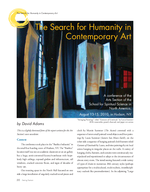 Adams, David: The Search for Humanity in Contemporary ArtReport on a conference of the Arts Section of the School for Spiritual Science in North America, August 13-15, 2010, in Hudson, NY The conference took place in the “Basilica Industria” in the small but bustling town of Hudson, NY. The “Basilica” location itself was not an academic classroom or an art gallery but a huge, semi-converted factory/warehouse with hopelessly high ceilings, exposed girders and infrastructure, tall windows, cracked concrete floors, and signs of decades of heavy use.
Adams, David: The Search for Humanity in Contemporary ArtReport on a conference of the Arts Section of the School for Spiritual Science in North America, August 13-15, 2010, in Hudson, NY The conference took place in the “Basilica Industria” in the small but bustling town of Hudson, NY. The “Basilica” location itself was not an academic classroom or an art gallery but a huge, semi-converted factory/warehouse with hopelessly high ceilings, exposed girders and infrastructure, tall windows, cracked concrete floors, and signs of decades of heavy use. Adams, David: Rudolf Steiner and Contemporary Art, and Rudolf Steiner—Alchemy of the Everyday (reviews)These two books are significant exhibition catalogs documenting and elaborating on two large, related, current exhibitions in Germany that represent an unprecedented public presentation and reconsideration of Rudolf Steiner’s work and his influence on art and society today. Both are large-format, hardbound publications in English with extensive color illustrations, and the contributions by multiple authors are concerned with Rudolf Steiner’s work and anthroposophical art from both anthroposophical and non-anthroposophical perspectives.
Adams, David: Rudolf Steiner and Contemporary Art, and Rudolf Steiner—Alchemy of the Everyday (reviews)These two books are significant exhibition catalogs documenting and elaborating on two large, related, current exhibitions in Germany that represent an unprecedented public presentation and reconsideration of Rudolf Steiner’s work and his influence on art and society today. Both are large-format, hardbound publications in English with extensive color illustrations, and the contributions by multiple authors are concerned with Rudolf Steiner’s work and anthroposophical art from both anthroposophical and non-anthroposophical perspectives. Adams, David: The Goetheanum Cupola Motifs of Rudolf Steiner (review)This large-format, hardbound book is a most significant publication for anthroposophical art in the English-speaking world, and once again we have Peter Stebbing to thank for putting together a finely crafted tome presenting a stellar collection of paintings and complementary texts. The book is beautifully laid out with intelligently selected photographs and artwork relating to passages in its texts.
Adams, David: The Goetheanum Cupola Motifs of Rudolf Steiner (review)This large-format, hardbound book is a most significant publication for anthroposophical art in the English-speaking world, and once again we have Peter Stebbing to thank for putting together a finely crafted tome presenting a stellar collection of paintings and complementary texts. The book is beautifully laid out with intelligently selected photographs and artwork relating to passages in its texts.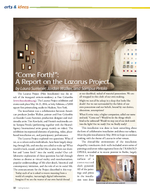 Adams, David: THE TRAShOLD OPERA: The Heartelligency of LazarusThis combined live and projected-video performance, an “opera without singing,” is a curious imagination—a quirky, contemporary reworking of the events and inner meanings of the story in the Gospel of St. John of the raising/initiation of Lazarus, infused by anthroposophical insights and the unusual creativity of Sampsa Pirtola.
Adams, David: THE TRAShOLD OPERA: The Heartelligency of LazarusThis combined live and projected-video performance, an “opera without singing,” is a curious imagination—a quirky, contemporary reworking of the events and inner meanings of the story in the Gospel of St. John of the raising/initiation of Lazarus, infused by anthroposophical insights and the unusual creativity of Sampsa Pirtola. Adams, David: Making Yourself New: review of Cognitive Yoga: Making Yourself a New Etheric Body and Individuality, by Yeshayahu (Jesaiah) Ben-AharonThis is a most extraordinary book—probably the most extraordinary book that has been written within anthroposophy since the original work of Rudolf Steiner. Yet it is unusually challenging to write a concise review of it that does justice to its diverse, groundbreaking, and intimately experiential treasures.
Adams, David: Making Yourself New: review of Cognitive Yoga: Making Yourself a New Etheric Body and Individuality, by Yeshayahu (Jesaiah) Ben-AharonThis is a most extraordinary book—probably the most extraordinary book that has been written within anthroposophy since the original work of Rudolf Steiner. Yet it is unusually challenging to write a concise review of it that does justice to its diverse, groundbreaking, and intimately experiential treasures.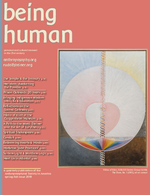 Adams, David: Hilma af Klint at the Guggenheim MuseumA Significant Artistic Event in the Artworld. The recent (2019) large exhibition of 168 of the paintings of Hilma af Klint (1862-1944) filling the Guggenheim Museum in New York City has been making huge waves in the mainstream and online artworld...
Adams, David: Hilma af Klint at the Guggenheim MuseumA Significant Artistic Event in the Artworld. The recent (2019) large exhibition of 168 of the paintings of Hilma af Klint (1862-1944) filling the Guggenheim Museum in New York City has been making huge waves in the mainstream and online artworld...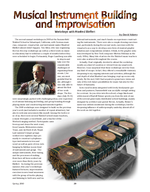 Adams, David: Musical Instrument Building and ImprovisationThe second-annual workshops in 2009 at the Summerfield Waldorf School in Sebastopol, California, with German musician, composer, visual artist, and instrument maker Manfred Bleffert almost didn’t happen... The unique instruments, their tuning, and the processes of making them have all been worked out over more than thirty years by Bleffert. As during the previous summer, this year’s workshops featured lectures, improvisation exercises in new tonal awareness... and much hands-on experience constructing the instruments.
Adams, David: Musical Instrument Building and ImprovisationThe second-annual workshops in 2009 at the Summerfield Waldorf School in Sebastopol, California, with German musician, composer, visual artist, and instrument maker Manfred Bleffert almost didn’t happen... The unique instruments, their tuning, and the processes of making them have all been worked out over more than thirty years by Bleffert. As during the previous summer, this year’s workshops featured lectures, improvisation exercises in new tonal awareness... and much hands-on experience constructing the instruments.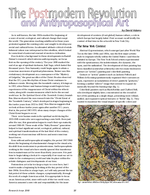 Adams, David: The Postmodern Revolution and Anthroposophical ArtAs is well known, the late 1960s marked the beginning of a wave of social, ecological, and cultural change that swept the world. The generation reaching adulthood in those years protested against the existing order and sought to develop new social and cultural forms. An alienated attitude critical of establishment values was widespread in this rebellion, which looked for some kind of universal renewal of modern civilization. If we look for a background to these developments in Rudolf Steiner’s research which informs anthroposophy, we focus first on the opening of the century. The year 1899 marked the end of an age of spiritual darkness, Kali Yuga, which lasted five thousand years. Now humanity could begin again to attain a conscious awareness of spiritual phenomena...
Adams, David: The Postmodern Revolution and Anthroposophical ArtAs is well known, the late 1960s marked the beginning of a wave of social, ecological, and cultural change that swept the world. The generation reaching adulthood in those years protested against the existing order and sought to develop new social and cultural forms. An alienated attitude critical of establishment values was widespread in this rebellion, which looked for some kind of universal renewal of modern civilization. If we look for a background to these developments in Rudolf Steiner’s research which informs anthroposophy, we focus first on the opening of the century. The year 1899 marked the end of an age of spiritual darkness, Kali Yuga, which lasted five thousand years. Now humanity could begin again to attain a conscious awareness of spiritual phenomena...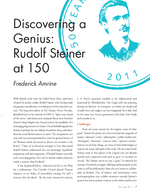 Amrine, Frederick: Discovering a Genius: Rudolf Steiner at 150Willi Brandt (who won the Nobel Peace Prize, and knew whereof he spoke) credits Rudolf Steiner with having made the greatest contribution to world peace of the twentieth century. The long-time editor of The Nation, Victor Navasky, described him in his memoir of 2005 as “light-years ahead of the curve,” and others such as Joseph Beuys have found in Steiner’s deep insights into human nature the possibility of a thoroughgoing renewal of culture. Owen Barfield argued that Steiner is perhaps the key thinker of modern times...
Amrine, Frederick: Discovering a Genius: Rudolf Steiner at 150Willi Brandt (who won the Nobel Peace Prize, and knew whereof he spoke) credits Rudolf Steiner with having made the greatest contribution to world peace of the twentieth century. The long-time editor of The Nation, Victor Navasky, described him in his memoir of 2005 as “light-years ahead of the curve,” and others such as Joseph Beuys have found in Steiner’s deep insights into human nature the possibility of a thoroughgoing renewal of culture. Owen Barfield argued that Steiner is perhaps the key thinker of modern times...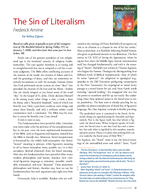 Amrine, Frederick: The Sin of Literalism, for Arthur ZajoncSurely one of the greatest paradoxes of our enlightened age is the irrational tenacity of religious fundamentalism. The case against literalism is so strong and so straightforward that one is tempted to call for a summary judgment. ... If only it were so easy. ... Here as elsewhere, it is Owen Barfield, following Rudolf Steiner, who gives us profound answers to our dilemmas. The first arrives in Ch. XIII of “Saving the Appearances” where he argues that, since the Middle Ages, human consciousness itself has changed fundamentally, and with it the meaning of “literal.”
Amrine, Frederick: The Sin of Literalism, for Arthur ZajoncSurely one of the greatest paradoxes of our enlightened age is the irrational tenacity of religious fundamentalism. The case against literalism is so strong and so straightforward that one is tempted to call for a summary judgment. ... If only it were so easy. ... Here as elsewhere, it is Owen Barfield, following Rudolf Steiner, who gives us profound answers to our dilemmas. The first arrives in Ch. XIII of “Saving the Appearances” where he argues that, since the Middle Ages, human consciousness itself has changed fundamentally, and with it the meaning of “literal.”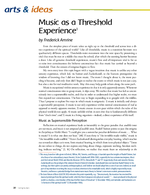 Amrine, Frederick: Music as a Threshold ExperienceEven the simplest piece of music takes us right up to the threshold and across into a direct experience of the spiritual world. Like all thresholds, music is a transition between two qualitatively different spaces. Thresholds resist movement into the new space by presenting a trial that must be met or a riddle that must be solved, after which the seeming barrier becomes a door. Like all genuine threshold experiences, music’s first and all-important trial is for us to raise into consciousness the hitherto unconscious fact that music has carried us beyond a threshold. Then the stream of enigmas begins to flow.
Amrine, Frederick: Music as a Threshold ExperienceEven the simplest piece of music takes us right up to the threshold and across into a direct experience of the spiritual world. Like all thresholds, music is a transition between two qualitatively different spaces. Thresholds resist movement into the new space by presenting a trial that must be met or a riddle that must be solved, after which the seeming barrier becomes a door. Like all genuine threshold experiences, music’s first and all-important trial is for us to raise into consciousness the hitherto unconscious fact that music has carried us beyond a threshold. Then the stream of enigmas begins to flow.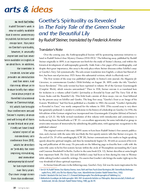 Amrine, Frederick (trans.): Goethe’s Spirituality as Revealed in The Fairy Tale of the Green Snake and the Beautiful Lily by Rudolf SteinerAside from a few pages of his autobiography, and despite their great importance, this essay is the only place where Steiner discusses either Schiller’s essay On the Aesthetic Education of Man, or Goethe’s Fairy Tale, systematically.
Amrine, Frederick (trans.): Goethe’s Spirituality as Revealed in The Fairy Tale of the Green Snake and the Beautiful Lily by Rudolf SteinerAside from a few pages of his autobiography, and despite their great importance, this essay is the only place where Steiner discusses either Schiller’s essay On the Aesthetic Education of Man, or Goethe’s Fairy Tale, systematically. Amrine, Frederick: Idea, Theory, Emotion, DesireFrederick Amrine gets to the heart of the question of the evolution of human consciousness in a way other professors will respect and everyone can follow.
Amrine, Frederick: Idea, Theory, Emotion, DesireFrederick Amrine gets to the heart of the question of the evolution of human consciousness in a way other professors will respect and everyone can follow. Amrine, Frederick: Provoking a Crisis (review)Review of Thomas Nagel, Mind & Cosmos: Why the Materialist Neo-Darwinian Conception of Nature is Almost Certainly False. “Above all, I would like to extend the boundaries of what is not regarded as unthinkable, in light of how little we really understand about the world.” — Thomas Nagel
Amrine, Frederick: Provoking a Crisis (review)Review of Thomas Nagel, Mind & Cosmos: Why the Materialist Neo-Darwinian Conception of Nature is Almost Certainly False. “Above all, I would like to extend the boundaries of what is not regarded as unthinkable, in light of how little we really understand about the world.” — Thomas Nagel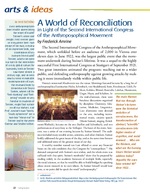 Amrine, Frederick: A World of Reconciliation in Light of the Second International Congress of the Anthroposophical MovementEditor: Fred Amrine gives us a sequence here—two essays of his own, a review of an important book, and translations of key excerpts from Rudolf Steiner, which can open our eyes to the necessities of a truly global culture for humanity, both as Steiner saw those almost a century ago, and as seen now by some remarkable contemporaries of ours.
Amrine, Frederick: A World of Reconciliation in Light of the Second International Congress of the Anthroposophical MovementEditor: Fred Amrine gives us a sequence here—two essays of his own, a review of an important book, and translations of key excerpts from Rudolf Steiner, which can open our eyes to the necessities of a truly global culture for humanity, both as Steiner saw those almost a century ago, and as seen now by some remarkable contemporaries of ours.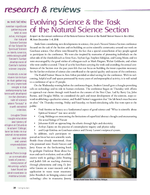 Amrine, Frederick: The Beauty of Anthroposophy, or: What’s Scientific about Spiritual Science?Science involves the interplay of intelligibility, discovery, and justification. ... Now this prevailing model is beset with difficulties. For example, there is no method for discovery; it is treated as extra-scientific. ... Much more could be adduced here, but this much already makes clear that something different is needed. So let’s expand the discussion by bringing in three additional concepts: sublimity, beauty, and elegance.
Amrine, Frederick: The Beauty of Anthroposophy, or: What’s Scientific about Spiritual Science?Science involves the interplay of intelligibility, discovery, and justification. ... Now this prevailing model is beset with difficulties. For example, there is no method for discovery; it is treated as extra-scientific. ... Much more could be adduced here, but this much already makes clear that something different is needed. So let’s expand the discussion by bringing in three additional concepts: sublimity, beauty, and elegance.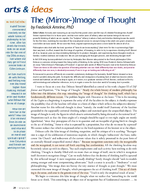 Amrine, Frederick: The (Mirror-)Image of ThoughtI want to focus on a text that Deleuze himself identified as central to his work: chapter III of Difference and Repetition, “The Image of Thought.” Nearly the whole history of modern philosophy has fallen into this delusion, this trap, mistaking the “image of thought” for thinking itself, which has a fundamentally different nature.
Amrine, Frederick: The (Mirror-)Image of ThoughtI want to focus on a text that Deleuze himself identified as central to his work: chapter III of Difference and Repetition, “The Image of Thought.” Nearly the whole history of modern philosophy has fallen into this delusion, this trap, mistaking the “image of thought” for thinking itself, which has a fundamentally different nature.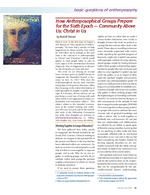 Amrine, Frederick (trans.): How Anthroposophical Groups Prepare for the Sixth Epoch (Rudolf Steiner)Why does the Anthroposophical Society have branches and groups of a long-term character, rather than focusing on the widest distribution of anthroposophical insights in public meetings? It is because, Steiner advises, we are practising a social way of being with each other which is not supported by today’s individualist and materialist culture...
Amrine, Frederick (trans.): How Anthroposophical Groups Prepare for the Sixth Epoch (Rudolf Steiner)Why does the Anthroposophical Society have branches and groups of a long-term character, rather than focusing on the widest distribution of anthroposophical insights in public meetings? It is because, Steiner advises, we are practising a social way of being with each other which is not supported by today’s individualist and materialist culture...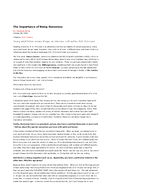 Baring, Penelope: The Importance of Being Humorous: an interview with author M.A. KirkwoodYoung adult fiction comes of age: Reading a novel by M. A. Kirkwood is an adventure into the very depths of human experience, where spirit and humor always meet. Somehow, the world we all know is different here, and that’s what is so refreshing about the narrative landscapes M.A. Kirkwood invites us to explore.
Baring, Penelope: The Importance of Being Humorous: an interview with author M.A. KirkwoodYoung adult fiction comes of age: Reading a novel by M. A. Kirkwood is an adventure into the very depths of human experience, where spirit and humor always meet. Somehow, the world we all know is different here, and that’s what is so refreshing about the narrative landscapes M.A. Kirkwood invites us to explore.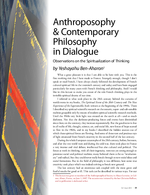 Ben-Aharon, Yeshayahu (Jesaiah): Anthroposophy & Contemporary Philosophy in Dialogue: Observations on the Spiritualization of ThinkingStrangely enough, though I don’t speak or read French, I have always closely followed the development of French cultural-spiritual life in the twentieth century and today and have been engaged particularly for many years with French thinking and philosophy. And I would like in this lecture to make you aware of the role French thinking plays in the invisible spiritual drama of our time.
Ben-Aharon, Yeshayahu (Jesaiah): Anthroposophy & Contemporary Philosophy in Dialogue: Observations on the Spiritualization of ThinkingStrangely enough, though I don’t speak or read French, I have always closely followed the development of French cultural-spiritual life in the twentieth century and today and have been engaged particularly for many years with French thinking and philosophy. And I would like in this lecture to make you aware of the role French thinking plays in the invisible spiritual drama of our time.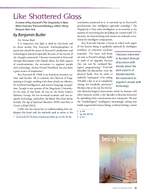 Butler, Benjamin: Like Shattered Glass: a review by of Kurzweil's The Singularity is NearThe ideas and aims of individuals like Ray Kurzweil should be given careful attention and permeated with insights from anthroposophical spiritual science; they serve as a clear warning of the times. We must see the onesidedness of such viewpoints.
Butler, Benjamin: Like Shattered Glass: a review by of Kurzweil's The Singularity is NearThe ideas and aims of individuals like Ray Kurzweil should be given careful attention and permeated with insights from anthroposophical spiritual science; they serve as a clear warning of the times. We must see the onesidedness of such viewpoints.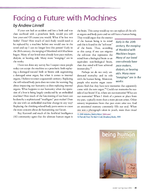 Linnell, Andrew: Facing a Future with MachinesRay Kurzweil and much of the Artificial Intelligence (AI) community agree that the ultimate human organ is the brain. ... if one can migrate the software that represents the mind from a biological brain to an equivalent non-biological brain, then that mind will have achieved immortality.
Linnell, Andrew: Facing a Future with MachinesRay Kurzweil and much of the Artificial Intelligence (AI) community agree that the ultimate human organ is the brain. ... if one can migrate the software that represents the mind from a biological brain to an equivalent non-biological brain, then that mind will have achieved immortality.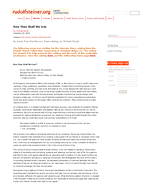 Ronall, Michael: How Then Shall We LiveAt first glance, the questions What is the meaning of life? or Why have you come to earth? seem overreaching, in fact, pretentious, grandiose, even bombastic. Present them to a thinking person in the course of a day, and they are likely to be dismissed as silly; trivial because the right answers would have to be ineffably profound; what is vital always eludes formulas.
Ronall, Michael: How Then Shall We LiveAt first glance, the questions What is the meaning of life? or Why have you come to earth? seem overreaching, in fact, pretentious, grandiose, even bombastic. Present them to a thinking person in the course of a day, and they are likely to be dismissed as silly; trivial because the right answers would have to be ineffably profound; what is vital always eludes formulas.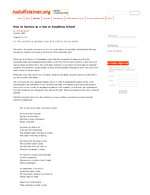 Ronall, Michael: How to Survive as a Man in Eurythmy SchoolThose new to eurythmy will immediately notice that the movements on stage are unlike the movements that most characterize the modern world: The world is hard, eurythmy is soft; the world can be violent, eurythmy flows; the world easily overlooks or can even try to eliminate our essential humanity, but eurythmy, like the esoteric science of anthroposophy that gave it birth, views the world itself in terms of human nature.
Ronall, Michael: How to Survive as a Man in Eurythmy SchoolThose new to eurythmy will immediately notice that the movements on stage are unlike the movements that most characterize the modern world: The world is hard, eurythmy is soft; the world can be violent, eurythmy flows; the world easily overlooks or can even try to eliminate our essential humanity, but eurythmy, like the esoteric science of anthroposophy that gave it birth, views the world itself in terms of human nature.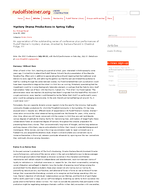 Ronall, Michael: Mystery Drama Productions in Spring ValleyAn appreciation of the outstanding series of conference-plus-performances of Rudolf Steiner's mystery dramas, directed by Barbara Renold in Chestnut Ridge, NY
Ronall, Michael: Mystery Drama Productions in Spring ValleyAn appreciation of the outstanding series of conference-plus-performances of Rudolf Steiner's mystery dramas, directed by Barbara Renold in Chestnut Ridge, NY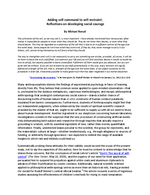 Ronall, Michael: Adding self-command to self-restraint: Reflections on developing social courage"The cultivation of the will, as we may call it, is most important. I have already mentioned how nervousness often makes it impossible for people to know what they should do. They do not know their desires, or even what they should desire." Rudolf Steiner
Ronall, Michael: Adding self-command to self-restraint: Reflections on developing social courage"The cultivation of the will, as we may call it, is most important. I have already mentioned how nervousness often makes it impossible for people to know what they should do. They do not know their desires, or even what they should desire." Rudolf Steiner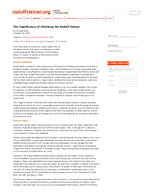 Ronall, Michael: The Significance of Christmas for Rudolf SteinerNotes of a lecture by Virginia Sease, PhD, at the Waldorf School of Princeton, on December 12, 2010, commemorating the 75th Anniversary of the Princeton Group. Rustic Nativities. Rudolf Steiner received his initial impressions of Christmas from the festive atmosphere of the Austro- Hungarian villages in the latter nineteenth century of his childhood. As Christmas approached, these neighborhoods were suffused by a mood he later described as magical breath that filled the homes and streets with joyful, hopeful anticipation.
Ronall, Michael: The Significance of Christmas for Rudolf SteinerNotes of a lecture by Virginia Sease, PhD, at the Waldorf School of Princeton, on December 12, 2010, commemorating the 75th Anniversary of the Princeton Group. Rustic Nativities. Rudolf Steiner received his initial impressions of Christmas from the festive atmosphere of the Austro- Hungarian villages in the latter nineteenth century of his childhood. As Christmas approached, these neighborhoods were suffused by a mood he later described as magical breath that filled the homes and streets with joyful, hopeful anticipation. Roszell, C.T.: The Blue Star of IndividualityIn the second scene of Rudolf Steiner’s mystery drama “The Portal of Initiation,” the human individuality is evoked through the imagination of a sparkling star. Maria says to Johannes, “You will have to undergo all the trepidations which one bereft of their senses could have to face—so speaks your star.” And in the following scene Benedictus encourages him with the following word, “My son, you have persevered this far—you will make it all the way through. I see your star shining full.”
Roszell, C.T.: The Blue Star of IndividualityIn the second scene of Rudolf Steiner’s mystery drama “The Portal of Initiation,” the human individuality is evoked through the imagination of a sparkling star. Maria says to Johannes, “You will have to undergo all the trepidations which one bereft of their senses could have to face—so speaks your star.” And in the following scene Benedictus encourages him with the following word, “My son, you have persevered this far—you will make it all the way through. I see your star shining full.”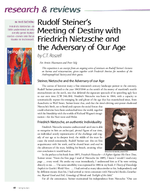 Roszell, C.T.: Rudolf Steiner’s Meeting of Destiny with Friedrich Nietzsche and the Adversary of Our AgeFriedrich Nietzsche remains undiscovered until one is able to recognize in him an archetypal, pivotal figure of our time, an individual utterly representative of the challenge and tragedy of our age at its deepest level; the riddle of the man focuses the mind existentially. Rudolf Steiner saw this on first acquaintance with his work, and he shared heart and soul in the adventure of the man, holding his breath, awaiting whatever conclusion it would lead to.
Roszell, C.T.: Rudolf Steiner’s Meeting of Destiny with Friedrich Nietzsche and the Adversary of Our AgeFriedrich Nietzsche remains undiscovered until one is able to recognize in him an archetypal, pivotal figure of our time, an individual utterly representative of the challenge and tragedy of our age at its deepest level; the riddle of the man focuses the mind existentially. Rudolf Steiner saw this on first acquaintance with his work, and he shared heart and soul in the adventure of the man, holding his breath, awaiting whatever conclusion it would lead to.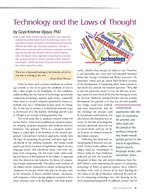 Vijaya, Gopi Krishna: Technology and the Laws of ThoughtThere has been such a massive emphasis on technology around us that in its glare the condition of man is like a deer caught in the headlights. In this condition, understanding the very nature of technology, particularly computing technology, appears quite tricky—especially when there is a natural antipathy generated in almost everybody who has a wholesome human sense for things. Yet, in one way or another, it is absolutely essential to get to the bottom of it.
Vijaya, Gopi Krishna: Technology and the Laws of ThoughtThere has been such a massive emphasis on technology around us that in its glare the condition of man is like a deer caught in the headlights. In this condition, understanding the very nature of technology, particularly computing technology, appears quite tricky—especially when there is a natural antipathy generated in almost everybody who has a wholesome human sense for things. Yet, in one way or another, it is absolutely essential to get to the bottom of it.
